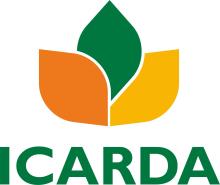Resource information
A tragedy of the commons is unfolding in the rangelands of West Asia and North Africa (WANA), where land is either public or collectively owned. Overgrazing under this land tenure has led to severe land degradation and soil erosion. Poverty and environmental degradation are intertwined in this low-rainfall region, where more than 38 million people live in rural areas and depend mainly on agriculture. Traditional rangeland grazing provides fodder in winter and spring, while in summer and autumn the animals browse cereal stubble and other crop residues. But rangeland feed resources have shrunk from providing 70 per cent of animal feed requirements five decades ago to no more than 25 per cent today. This is mainly because there are more animals but also because of inappropriate land-use policies and lack of secure property rights, all of which fuel unsustainable land use. To stem the degradation, the International Center for Agricultural Research in the Dry Areas (ICARDA) and national partners in Morocco and Tunisia have designed alley cropping technologies that enhance fodder quality and quantity, thereby reducing pressure on the rangelands. The technologies were introduced on marginal lands in the two countries through the Mashreq/Maghreb (M&M) adaptive research project, which combined research on NRM with research on integrated crop–livestock production.


